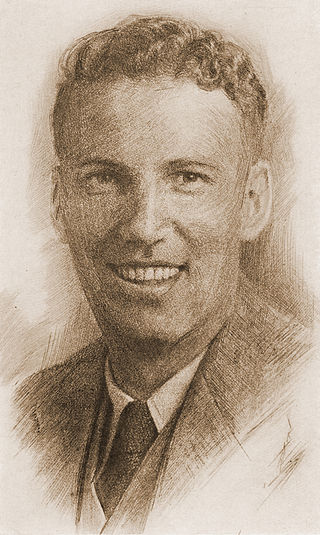
Mizzou Arena is an indoor arena located on the campus of the University of Missouri in Columbia, Missouri. Home to the school's men's and women's basketball teams, the facility opened in November 2004 and replaced the Hearnes Center as the school's flagship indoor sports facility. The arena also serves as the Columbia-Jefferson City market's venue for well-known 'arena' acts such as Rascal Flatts, Luke Bryan and the Eagles. The arched-roof building seats 15,061, and is located just south of Hearnes and Memorial Stadium. The arena is host to Missouri State High School Activities Association championships for basketball and wrestling. The arena was originally known as Paige Sports Arena.

Amory Tingle "Slats" Gill was an American college basketball coach, the head coach at Oregon State University in Corvallis for 36 seasons. As a player, Gill was twice named to the All-Pacific Coast Conference basketball team. As head coach, he amassed 599 victories with a winning percentage of .604. Gill was also the head coach of the baseball team for six seasons and later was the OSU athletic director.

The Walter A. Haas Jr. Pavilion is an indoor arena on the campus of the University of California in Berkeley. It is the home venue of the Golden Bears men's and women's basketball, women's volleyball, and men's and women's gymnastics teams. The arena is located in the middle of the main sports complex, overlooking Evans Diamond (baseball) and Edwards Stadium (track/soccer).

The Lawrence Joel Veterans Memorial Coliseum is a 14,665-seat multi-purpose arena, in Winston-Salem, North Carolina. Construction on the arena began on April 23, 1987, and it opened on August 28, 1989. It was named after Lawrence Joel, an Army medic from Winston-Salem who was awarded the Medal of Honor in 1967 for action in Vietnam on November 8, 1965. The memorial was designed by James Ford in New York, and includes the poem "The Fallen" engraved on an interior wall. It is home to the Wake Forest University Demon Deacons men's basketball and women's basketball teams, and is adjacent to the Carolina Classic Fairgrounds. The arena replaced the old Winston-Salem Memorial Coliseum, which was torn down for the LJVM Coliseum's construction.

William Neal Reynolds Coliseum is a multi-purpose arena located in Raleigh, North Carolina, United States, on the campus of North Carolina State University. The arena was built to host a variety of events, including agricultural expositions and NC State basketball games. It is now home to all services of ROTC and several Wolfpack teams, including women's basketball, women's volleyball, women's gymnastics, and men's wrestling. The university named the court in Reynolds "Kay Yow Court" on February 16, 2007, with the assistance of a substantial donation from the Wolfpack Club. That same night, the Wolfpack women upset #2 North Carolina, just two weeks after the men upset #3 North Carolina at the PNC Arena.

Coleman Coliseum is a 15,383-seat multi-purpose arena in Tuscaloosa, Alabama, on the campus of the University of Alabama. It is the current home of the Alabama Crimson Tide men's and women's basketball and women's gymnastics teams, and previously served as the home of the women's volleyball program. Opened in 1968 as Memorial Coliseum as a replacement for Foster Auditorium, the coliseum is located at the center of the University of Alabama's athletic complex, which also includes Sewell-Thomas Stadium, Sam Bailey Track & Field Stadium, the Hank Crisp Indoor Facility, the Mal M. Moore Athletic Facility and the football building and practice fields.

Beasley Coliseum is a general-purpose indoor arena in the northwest United States, located on the campus of Washington State University in Pullman, Washington. The home venue for the Cougars men's and women's basketball teams of the Pac-12 Conference, it opened 51 years ago in 1973, and its current seating capacity is 12,058 for basketball.

Cassell Coliseum is a 10,052-seat multi-purpose arena in Blacksburg, Virginia, United States, that opened in 1962. It is home to the Virginia Tech Hokies men's and women's basketball teams, wrestling team, and volleyball team.

James H. Hilton Coliseum, commonly Hilton Coliseum, is a 14,267-seat multi-purpose arena located in Ames, Iowa. The arena opened in 1971. It is home to the Iowa State University Cyclones men's and women's basketball teams, wrestling, gymnastics and volleyball teams.

The WVU Coliseum is a 14,000-seat multi-purpose arena located on the Evansdale campus of West Virginia University in Morgantown, West Virginia. The circular arena features a poured concrete roof. It was built with state funds and replaced the WVU Fieldhouse, which seated 6,000.

The UNT Coliseum is a 9,797-seat multi-purpose arena located in Denton, Texas, United States, built in 1973. While the arena's formal name is the UNT Coliseum, the building is more commonly referred to as the Super Pit, a nickname derived from its proximity to the former home of the Mean Green basketball teams, the Ken Bahnsen Gym, nicknamed the Snake Pit. Most signage inside the stadium uses the Super Pit name; the most prominent usage of the UNT Coliseum name is above a single new set of ticket windows added during 2017 renovations.

The Paul J. Meyer Arena, which is part of the Ferrell Center, is an arena in Waco, Texas. Built in 1988 and located adjacent to the Brazos River, it is home to the Baylor University Bears volleyball, acrobatics, and tumbling teams. It is named for Charles R. Ferrell, a Baylor student and legacy who died in 1967, and whose family's estate was a major benefactor of the arena. The building replaced the Heart O' Texas Coliseum as the school's primary indoor athletic facility. The men's and women's basketball teams relocated to the newly-constructed Foster Pavilion in 2024.

Ed & Rae Schollmaier Arena, formerly known as Daniel–Meyer Coliseum, is a basketball arena located on the campus of Texas Christian University (TCU) in Fort Worth, Texas, United States. The arena is part of the Daniel-Meyer Athletics Complex and sits between Amon G. Carter Stadium and Sam Baugh Indoor Practice Facility. The arena is home to the TCU Horned Frogs Men's and Women's basketball teams. It was built in 1961 and originally named after former TCU football and basketball coach Dutch Meyer and former TCU board member Milton Daniel. As part of the 2015 renovation, the facility was renamed for lead donors Ed & Rae Schollmaier. The facility currently seats 6,800 people.

The Robins Center is a 7,201-seat multi-purpose arena in Richmond, Virginia. Opened in 1972, the arena is home to the University of Richmond Spiders basketball. It hosted the ECAC South men's basketball tournament in 1983. It is named for E. Claiborne Robins Sr, class of 1931, who, along with his family, have been leading benefactors for the school. The opening of the Robins Center returning Spider basketball to an on-campus facility for the first time since the mid-1940s when it outgrew Millhiser Gymnasium. In the intervening decades, the Spiders played home games in numerous locations around the Richmond area, including the Richmond Coliseum (1971–1972), the Richmond Arena (1954–1971), the Benedictine High School gymnasium (1951–1954), Grays' Armory (1950–1951) and Blues' Armory (1947–1950). The Robins Center arena serves as the location of the University of Richmond's commencement exercises and hosted a 1992 Presidential debate involving Bill Clinton, George H. W. Bush, and Ross Perot.

The 1983 NCAA Division I men's basketball tournament involved 52 schools playing in single-elimination play to determine the national champion of men's NCAA Division I college basketball. It began on March 17, 1983, and ended with the championship game on April 4 at The Pit, then officially known as University Arena, on the campus of the University of New Mexico in Albuquerque. A total of 51 games were played.

The Matthew Knight Arena (MKA) is a 12,364-seat, multi-purpose arena in Eugene, Oregon, United States. It is home of the University of Oregon Ducks basketball teams, replacing McArthur Court. It is located on the east side of campus at the corner of Franklin Boulevard and Villard Street, a gateway to campus as people arrive from I-5. The arena was originally intended to be ready for the start of the 2010–11 basketball season, but instead opened for the men's basketball game against the USC Trojans on January 13, 2011. It is named for chief donor Phil Knight's son, Matthew Knight, who died aged 34 in a scuba diving accident. The arena cost $227 million and was designed as collaboration between TVA Architects of Portland and Ellerbe Becket of Kansas City, Missouri. Hoffman Construction Company of Portland was the general contractor.
James Edward Anderson was an American college basketball player and coach. He was a longtime assistant at Oregon State University (OSU) to head coaches Paul Valenti and Ralph Miller, given credit for recruiting a series of top-level players to the school during the 1970s and 1980s. Anderson assumed the role as head coach of men's basketball at OSU from 1989 to 1995, compiling a record of 79–90.

The Toyota Center is a multi-purpose arena in the northwest United States, located in Kennewick, Washington.

Paul Bartholomew Valenti was an American college basketball player and coach, known for his long association with Oregon State University.

Edward Collins Lewis was an athlete from Portland, Oregon who played basketball collegiately for Oregon State College from 1929–30 to 1932–33. A lanky center with good ballhandling, passing, and shooting skills, Lewis captained the team during his senior campaign and led the Pacific Coast Conference in scoring.


























